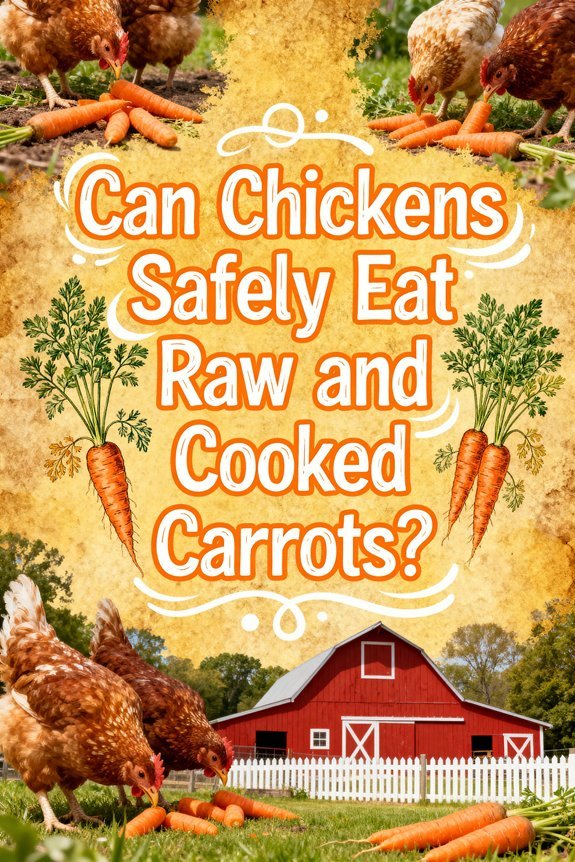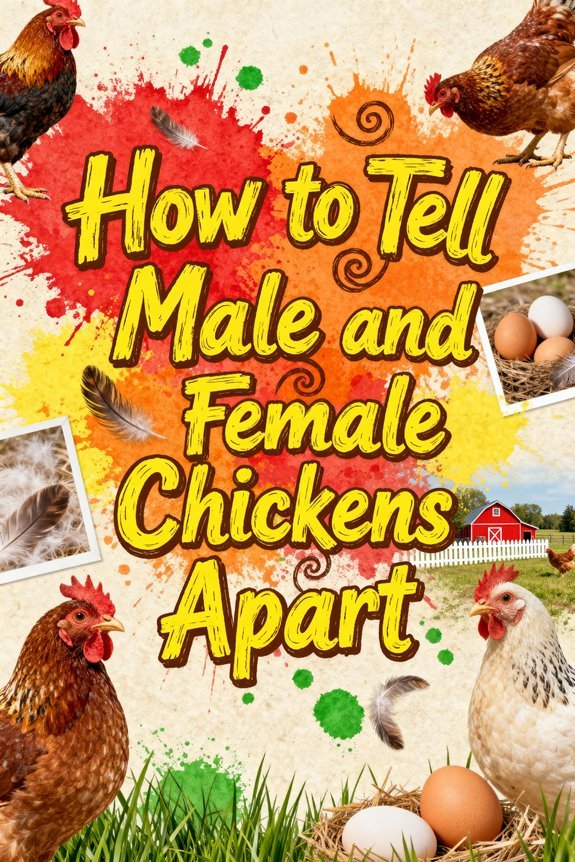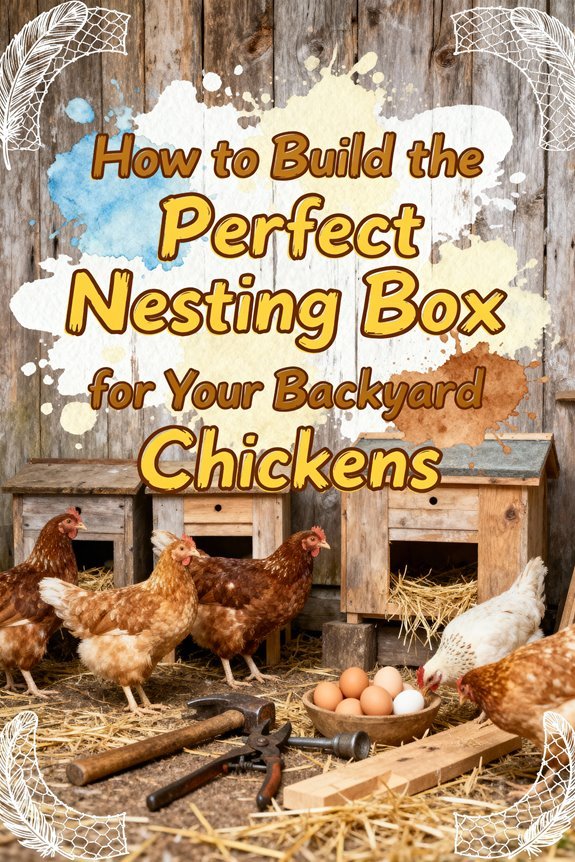Can Chickens Safely Eat Avocados? A Guide for Backyard Farmers
While you can feed ripe avocado flesh to chickens in strict moderation, it requires careful preparation due to the presence of persin, a toxic compound found primarily in Guatemalan varieties. You’ll need to remove all skin, pit, leaves, and bark before offering small portions (1/2 to 1 teaspoon per bird) no more than twice weekly. Monitor your flock closely for signs of toxicity, including weakness and respiratory distress, as symptoms can develop within 15-30 minutes. The following guidelines guarantee safe avocado feeding practices for your backyard flock.
Understanding Avocado Toxicity in Chickens
While many backyard chicken owners may be tempted to share kitchen scraps with their flock, avocados pose a serious toxic threat to chickens due to the compound persin. This fungicidal toxin, present throughout the entire avocado plant, can trigger severe health complications in your birds, with potentially fatal outcomes. The Guatemalan varieties are considered most dangerous to poultry. Similar to how red mites can cause distress in poultry, persin toxicity requires swift action to protect flock health. Even high-producing breeds like Leghorns and Australorps can succumb quickly to avocado poisoning.
When evaluating avocado risks to chicken health, you’ll need to watch for critical symptoms including weakness, depression, respiratory distress, and reluctance to perch. The toxin primarily affects the cardiovascular system, potentially causing myocardial necrosis. Your chickens may exhibit rapid breathing, lethargy, or collapse after exposure. In some cases, birds might succumb to sudden death without displaying preliminary symptoms. The swift progression of persin toxicity necessitates immediate veterinary intervention if exposure is suspected or symptoms emerge.
The Hidden Dangers of Persin
Persin’s molecular structure as a fat-soluble fungicidal toxin makes it particularly dangerous to chickens, with its ability to rapidly penetrate cellular membranes and disrupt essential organ functions. You’ll find persin throughout the avocado plant, with concentrations ranging from 0.9-1% in leaves to 0.08-0.15% in fruit. The toxicity mechanisms manifest within 15-30 minutes after ingestion, though effects can be delayed up to 30 hours.
When your chickens are exposed, persin effects target the cardiovascular system, triggering respiratory distress and potential heart failure. The compound’s oil solubility enhances its absorption rate, making even small exposures dangerous. Your most vulnerable birds include chicks, elderly hens, and those with compromised immune systems, where minimal doses can prove lethal without immediate veterinary intervention. Pullet stage chickens between 6 and 16 weeks are especially sensitive to persin exposure during their critical development phase. Affected birds may develop sour crop from the digestive disruption caused by persin toxicity. Signs of avocado poisoning include severe digestive issues like vomiting and diarrhea.
Safe Parts vs. Harmful Parts of Avocados
Understanding the distinct toxicity levels across different avocado components helps identify which parts pose lethal risks to your chickens. The safe avocado parts are limited to carefully prepared flesh from ripe fruit, while harmful avocado components include the skin, pit, leaves, and bark, which contain concentrated levels of persin toxin. You’ll need to remove all skin and pit thoroughly, leaving a margin of flesh near the skin untouched to minimize persin exposure. While the flesh offers beneficial nutrients like vitamin E and minerals, you should only feed it sparingly as an occasional treat. Be vigilant for signs of toxicity when introducing avocado flesh, as individual chickens may react differently to even trace amounts of persin. Young chicks and elderly birds are especially vulnerable to avocado poisoning and should never be given the fruit.
Proper Preparation Methods for Feeding
Before introducing avocado to your flock’s diet, proper preparation techniques must be implemented to minimize toxicity risks and guarantee safe consumption. Begin by thoroughly removing all skin, pit, and leaves, as these contain concentrated levels of persin toxin. Cut the flesh into bite-sized pieces or mash it for proper serving sizes that reduce choking hazards. Combining avocado with regular feed helps provide essential nutrients and vitamins that support chicken health. Just as with molasses flock blocks, this treat should be offered in moderation.
These precautions are critical since avocado toxins can be lethal to chickens if not properly prepared. Inspect the flesh carefully for any signs of spoilage or mold before feeding. You’ll need to serve the avocado fresh rather than processed, and only offer small portions while monitoring reactions in your birds. Remove any uneaten pieces promptly to prevent spoilage. When implementing avocado into their diet, maintain strict portion control, ensuring it doesn’t exceed 10% of their total food intake. Clean feeding areas thoroughly after serving to maintain coop hygiene.
Recognizing Signs of Avocado Poisoning
While proper preparation methods help minimize risks, rapid identification of avocado toxicity symptoms enables swift intervention and improved outcomes. You’ll need to implement consistent symptom monitoring, as signs can appear within 15-30 minutes or up to 30 hours post-ingestion. Watch for initial indicators including weakness, depression, and reluctance to perch, often accompanied by ruffled feathers and loss of appetite. Early intervention becomes critical when you observe dyspnea or lethargy. Serious medical complications can arise since avocado toxins cause myocardial necrosis in birds.
More severe cases present with heavy breathing, neck swelling, and cyanosis. The toxin persin particularly affects the heart muscle, potentially leading to sudden death. If you suspect avocado poisoning, seek immediate veterinary care. Treatment options may include crop evacuation and activated charcoal administration to reduce toxin absorption if caught early enough.
Nutritional Benefits and Drawbacks
Despite avocados’ rich nutritional profile of monounsaturated fats, vitamins A, B, E, and K, their benefits for chickens remain controversial due to persin toxicity risks. While these nutrients could theoretically support feather health, immune function, and metabolism, the high fat content poses significant concerns for your flock’s health. This fruit’s fungicidal toxin persin can cause severe respiratory distress and heart problems in chickens. Just as Anatolian Shepherds protect flocks from predators, being cautious about toxic foods safeguards your chickens’ wellbeing.
When integrating any avocado varieties into your chicken diet, you’ll need to evaluate several drawbacks. The excessive fat content can lead to obesity, fatty liver disease, and reduced feed efficiency. More critically, even the flesh contains trace amounts of persin, though less than leaves or pits. The potential benefits of protein and vitamins don’t outweigh the risks of digestive issues and possible toxicity. Like with high oxalic acid in spinach, certain foods can interfere with essential nutrient absorption in chickens. You’ll achieve better results focusing on traditional, proven feed sources for your chickens’ nutritional needs.
Recommended Serving Sizes and Frequency
Safe avocado feeding requires precise portion control and strict adherence to recommended frequencies. You’ll need to limit serving sizes to 1/2 to 1 teaspoon of mashed avocado per chicken, adjusting for the bird’s size and age. Never exceed 10% of their total daily food intake with avocado supplements. The avocado skin and pit must be completely removed before feeding any portion to chickens.
For feeding frequency, restrict avocado treats to once or twice weekly maximum. More frequent servings risk persin accumulation and potential toxicity. You’ll want to introduce avocado gradually by mixing it with regular feed, allowing your chickens’ digestive systems to adapt. Monitor them closely after feeding for signs of intolerance, such as diarrhea or reduced appetite. If you observe any adverse reactions, reduce the serving size or discontinue avocado treats entirely. If your chickens develop sores from pecking while adjusting to the new treat, apply gentian violet spray to discourage further picking and prevent infection.
Emergency Response to Accidental Ingestion
When your chickens accidentally ingest avocado parts, rapid recognition of toxicity signs and immediate veterinary intervention are critical for survival. Your emergency protocols should begin within 2 hours post-ingestion, before symptoms develop. Contact your avian veterinarian immediately while monitoring for weakness, breathing difficulty, and lethargy.
The toxic compound persin found in avocados acts as a natural fungicide and is particularly deadly to birds. Don’t attempt home remedies without professional guidance. Your vet may perform crop lavage and administer activated charcoal (1-3 g/kg) to reduce toxin absorption. Just as with toxic nightshade plants, avocados can cause severe organ damage in chickens. Rapid intervention is essential as persin causes severe cardiac and respiratory damage, often requiring oxygen therapy and hospitalization. Keep your chickens in a secure fencing enclosure with at least 8-10 square feet per bird to prevent foraging in areas where avocados may have fallen. Watch for ruffled feathers, reluctance to perch, and respiratory distress, as these symptoms can emerge between 15 minutes to 30 hours after exposure. Remove all avocado materials from your flock’s access to prevent further ingestion.
Healthier Treat Alternatives for Your Flock
After understanding the risks of avocado toxicity, providing your flock with nutritionally appropriate treats becomes a key component of responsible chicken care. You’ll find safe alternatives in nutrient-rich vegetables like cooked beans, broccoli, carrots, and pumpkins, which deliver essential vitamins and minerals while encouraging natural foraging behaviors. Start the day with layer feed before offering any treats to ensure proper nutrition. Raw oats can provide beneficial antioxidants and minerals when offered in moderation.
For protein supplementation, you can offer mealworms, crickets, or cooked eggs in controlled portions. Scattering dried mealworms in bedding material promotes natural foraging instincts. Seeds such as sunflower and chia provide healthy fats that support feather condition. Fresh fruits, particularly watermelon and berries, offer hydration and antioxidants. Remember that treat moderation is important – limit treats to 10% of their total diet. Implement vegetable variety through creative delivery methods like hanging vegetable piñatas or herb garlands, which simultaneously provide enrichment and prevent destructive behaviors in your flock.
Best Practices for Avocado Storage and Handling
Proper storage and handling techniques for avocados greatly impact their safety and nutritional value when used as livestock feed or food. You’ll need to monitor avocado ripening by storing unripe fruits at 5°C to 12°C with 95% relative humidity. Keep temperatures above 3°C to prevent chilling injury that causes flesh deterioration. When checking ripeness, gently squeeze the avocado and monitor closely to avoid overripening.
Similar to how dust management is crucial for chicken bedding materials, maintaining proper ventilation in avocado storage areas helps prevent mold growth and spoilage. For cut avocados, apply water or light oil coatings to exposed surfaces and store them flesh-side down in airtight containers. You can extend preservation by freezing halves coated with lemon juice in sealed bags. Control ethylene exposure during storage to manage ripening rates – refrigerate ripe avocados for up to 3 days. Regular inspection of stored avocados for quality changes is essential before feeding them to your flock. These storage techniques help maintain nutritional integrity and prevent spoilage.



